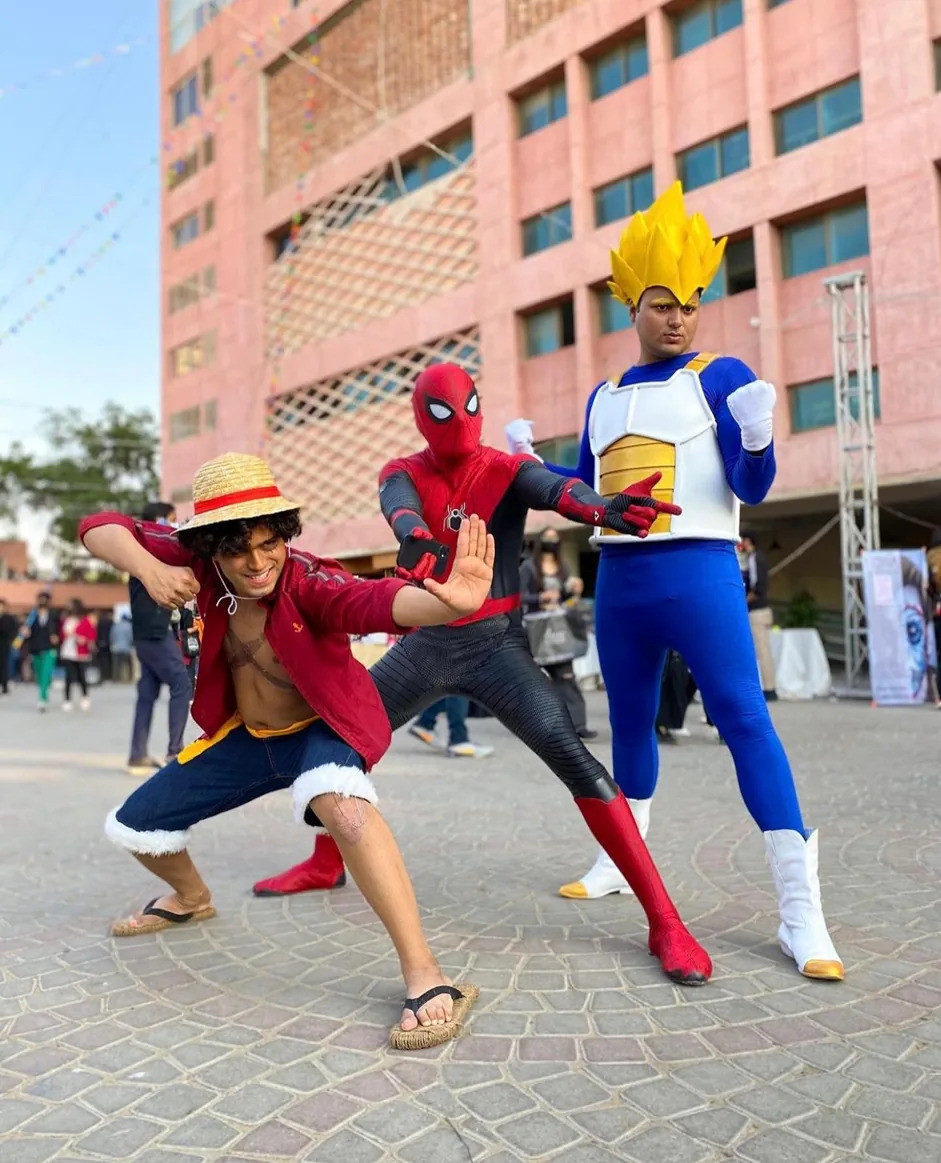KARACHI:
At Habib University’s student-run HUcon, Fahad Ali Shah remembers the first time fans in Pakistan gathered for anime. “They could never imagine a convention of this level,” he said. “It used to be on a very small scale. Now, you find people with similar interests everywhere. If a person likes a character, you go and talk to them. There are references that only anime fans understand.”
It is this sense of recognition that has pulled anime out of the niche social media circle it was restricted to and into Pakistani youths’ social calendar. Once confined to online fan groups, the culture now fills university auditoriums, expo halls, and social feeds. Student clubs at IBA and LUMS organise events like IBAcon and Comic Day, while vendors set up stalls to sell items like Naruto pillows and One Piece mugs. In Lahore, Geek Haven’s Comic Con Pakistan first set the benchmark, and its spin-offs continue to shape how these gatherings look and feel.
Photo credits: Fahad Ali Shah, HUcon organiser
The most anticipated is Popclash, scheduled for late November. Organised by Hox Studios, the convention offers free stalls to artists, publishes original work, and builds spaces for cosplayers, illustrators, and writers to turn hobbies into professions. Similar efforts have multiplied across the country. Geek Con, organised by Geek Haven, took place in Lahore last month and earlier in Karachi, featuring performances by Young Stunners alongside anime-inspired art. Each event keeps the micro-community active but more importantly, visible.
For organisers, the drive is both personal and practical. “The reason why they’re too hyperactive to grow and invest is because younglings get to write their stories and work in some situations instead of wasting their time,” said Mohammad Umair, host of Popclash. Yasir Obaid, Geek Haven’s co-founder, described their first convention as a passion project that later revealed a wider market. “The few events that were happening before were done by old people and we didn’t really get their mindset,” he said.“We wanted to bridge that gap and do it in a more community-driven way.”
Streaming platforms have accelerated the shift. Netflix offered shows like The Last Airbender, Howl’s Moving Castle and The Boy and the Heron brought anime into new households, while global hits such as Attack on Titan and Demon Slayer gave it mainstream status. “The stigma around watching it has lessened,” said Yasir. “It has now become cool to watch anime.” Others trace the boom back to the COVID-19 lockdowns, when people turned to accessible content like Dragon Ball Z and Pokémon available online.
For fans, the appeal goes beyond novelty. “Unlike kids’ cartoons, Japanese anime is made for all ages,” said Arsalan Hussain, who has followed the genre since the Dragon Ball Z era. This broad demographic makes anime easier to sustain, he explained. To Umair, the fandom also reflects a particular profile: educated, English-speaking, and often working in professions like law, coding, or freelancing. Even cosplayers, he said, save and invest carefully to fund their craft.
The reasons, he argues, are partly linguistic. “Anime fans are watching the anime in Japanese, which has subtitles. For that, they need a specific reading speed to consume it in Japanese and instantly understand the context too. So you need a little bit of intelligence to do that.”
But the majority of the crowd is younger. “It has the OG fans out there in their twenties or thirties, but most are sixteen to twenty,” Umair said. “It’s more of a youth movement at this point.”
As November approaches, calendars are filling fast. Popclash in Lahore, Geek Con in Karachi, and student comic days across campuses will keep anime at the centre of youth culture. What began as a niche pastime is now an industry of gatherings, merchandise, and shared language, proof that Pakistan’s anime geeks are not just alive, but thriving.


